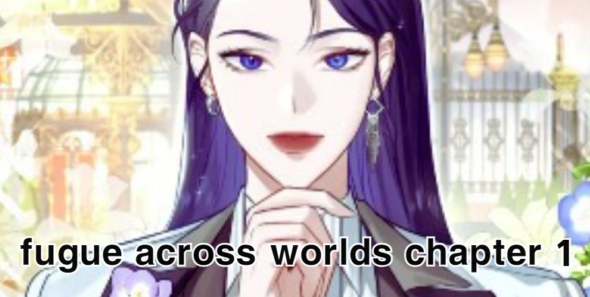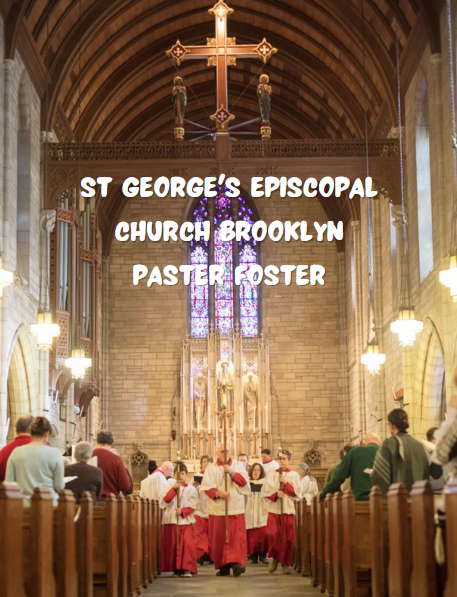Fugue Across Worlds Chapter 1: A Deep Dive into the Enigmatic Opening
Introduction
“Fugue Across Worlds Chapter 1” introduces readers to a richly woven narrative filled with intrigue, mystery, and a deep sense of atmosphere. As the opening chapter of what promises to be a complex and engaging tale, it sets the stage for a story that transcends the boundaries of time and space.
The protagonist, Weng Shaoying, is introduced as one of the most famous singers in Dongping, captivating audiences with her performances at the renowned venue, Song of Fairyland.
This article provides an in-depth analysis of “Fugue Across Worlds Chapter 1,” exploring the themes, characters, and settings introduced in this pivotal opening. By delving into the nuances of the narrative, this piece aims to offer readers fresh insights and interpretations that go beyond the existing discussions about this work. For those seeking a deeper understanding of “Fugue Across Worlds,” this article will serve as a comprehensive guide.
The World of Dongping: Setting the Stage
Dongping: A City of Contrasts
Dongping, the setting of “Fugue Across Worlds Chapter 1,” is portrayed as a city of contrasts. It is a place where the beauty of art and culture coexist with the darker elements of human nature. The city’s atmosphere is palpable, with the descriptions of its streets, architecture, and inhabitants painting a vivid picture of a place that is both enchanting and foreboding.
The duality of Dongping reflects the broader themes of the story, where light and darkness, hope and despair, are in constant tension. This setting provides a fertile ground for the unfolding drama, allowing the characters to navigate a world that is as unpredictable as it is captivating.
Song of Fairyland: A Sanctuary of Art
At the heart of Dongping lies the Song of Fairyland, a venue renowned for its performances and the talent it attracts. It is here that Weng Shaoying, the protagonist, has made her name. The Song of Fairyland is more than just a stage; it is a sanctuary where art is revered, and where the audience comes to escape the harsh realities of the world outside.
The venue itself is described in rich detail, with its opulent interiors and ethereal ambiance contributing to the sense of otherworldliness that pervades the story. It is a place where time seems to stand still, allowing the characters and the audience alike to lose themselves in the performances that unfold within its walls.
The Atmosphere of Chapter 1
The atmosphere in “Fugue Across Worlds Chapter 1” is one of tension and anticipation. The narrative is imbued with a sense of foreboding, as if something momentous is about to occur. This is achieved through the careful use of language, imagery, and pacing, which together create a mood that is both haunting and alluring.
The chapter’s atmosphere is further enhanced by the music that permeates the story. Weng Shaoying’s performances at the Song of Fairyland are not just background events; they are central to the narrative, with her music serving as a conduit for the emotions and themes that the story seeks to explore.
Weng Shaoying: The Enigmatic Protagonist
A Star in Troubled Times
Weng Shaoying is introduced as a singer of remarkable talent, whose fame has spread far and wide. In the troubled times that Dongping is experiencing, her performances offer a rare moment of solace for those who come to see her. She is a beacon of light in a dark world, yet there is an air of mystery surrounding her that hints at a deeper, more complex character.
Shaoying’s fame is not just due to her talent, but also to the way she connects with her audience. Her performances are described as transcendent, as if she is able to tap into emotions and experiences that resonate on a profound level. This connection is key to her character and to the role she plays in the story.
The Duality of Weng Shaoying
One of the most intriguing aspects of Weng Shaoying’s character is the duality that she embodies. On the surface, she is a celebrated performer, beloved by many. However, there are hints that her life is not as perfect as it seems. There is a sense of melancholy that surrounds her, suggesting that she carries burdens or secrets that the audience is not yet privy to.
This duality is reflective of the broader themes of the story, where appearances can be deceiving, and where the line between reality and illusion is often blurred. As the narrative progresses, it is likely that more layers of Shaoying’s character will be revealed, offering readers a deeper understanding of who she is and what drives her.
The Role of Music in Shaoying’s Life
Music is central to Weng Shaoying’s life, both as a source of personal expression and as a means of connecting with others. Her performances at the Song of Fairyland are described in almost mystical terms, as if she is able to channel something otherworldly through her music.
This connection to music is not just a defining trait of her character, but also a key element of the story’s exploration of themes such as identity, memory, and emotion. Through her music, Shaoying is able to communicate what words cannot, making her performances a powerful and essential part of the narrative.
Themes and Symbolism in Chapter 1
The Theme of Escapism
One of the central themes in “Fugue Across Worlds Chapter 1” is escapism. The characters, and by extension the audience, are drawn to the Song of Fairyland as a refuge from the troubles of the outside world. Through music and performance, they are able to momentarily forget their hardships and lose themselves in the beauty of the art that is being presented.
This theme of escapism is not without its complexities. While the Song of Fairyland offers a temporary reprieve, it also raises questions about the nature of reality and illusion. Can escapism truly offer a solution to the problems the characters face, or is it merely a way of avoiding them? This tension between escape and confrontation is likely to be a recurring motif in the story.
Memory and Identity
Memory and identity are also key themes in “Fugue Across Worlds Chapter 1.” The characters are often depicted as being haunted by their pasts, with their memories shaping their present actions and choices. For Weng Shaoying, her identity as a performer is closely tied to her memories, both of her own life and of the experiences she has absorbed through her music.
The theme of memory is further explored through the structure of the narrative, which often blurs the lines between past and present. This creates a sense of disorientation, reflecting the characters’ own struggles to reconcile their memories with their current realities. As the story progresses, it will be interesting to see how these themes are further developed and what insights they offer into the characters’ motivations.
The Symbolism of the Song of Fairyland
The Song of Fairyland itself is rich with symbolism. As a venue, it represents both a sanctuary and a trap—a place where characters can escape from the world, but also where they are confronted with the inescapable truths of their own lives. The name “Song of Fairyland” suggests a place of enchantment and fantasy, but also one that may be illusory or deceptive.
This dual symbolism is reflective of the broader themes of the story, where nothing is quite as it seems. The Song of Fairyland is both a refuge and a mirror, offering solace to those who seek it, but also forcing them to confront the realities they would rather avoid.
Narrative Structure and Style
A Nonlinear Narrative
“Fugue Across Worlds Chapter 1” employs a nonlinear narrative structure, which adds to the sense of mystery and complexity in the story. The narrative shifts between different time periods and perspectives, creating a tapestry of interconnected events and experiences.
This nonlinear approach allows the author to explore the themes of memory and identity in a more nuanced way, as the characters’ pasts are revealed gradually, often in fragmented or ambiguous ways. This structure also keeps the reader engaged, as they are constantly piecing together the narrative, trying to make sense of the connections between the different threads.
A Lyrical Prose Style
The prose style in “Fugue Across Worlds Chapter 1” is lyrical and evocative, with a strong emphasis on imagery and atmosphere. The language is often poetic, with descriptions that create a vivid sense of place and mood. This style is particularly effective in conveying the ethereal quality of the Song of Fairyland and the performances that take place there.
The lyrical prose also serves to heighten the emotional impact of the story, drawing the reader into the characters’ inner worlds and making their experiences feel more immediate and visceral. This style of writing is well-suited to the themes of the story, as it allows for a deeper exploration of the characters’ emotions and the symbolic elements of the narrative.
Character Analysis: Key Figures Introduced in Chapter 1
Weng Shaoying: The Enigmatic Diva
As the central character of “Fugue Across Worlds Chapter 1,” Weng Shaoying is a figure shrouded in mystery and allure. Her fame as a singer in Dongping has elevated her to near-mythical status, yet beneath the surface, there are hints of a more complex and troubled individual.
Shaoying’s performances are described as otherworldly, capable of transporting her audience to another realm. This ability to transcend the ordinary through her music is a key aspect of her character, and it raises questions about the source of her talent. Is it simply natural ability, or is there something more supernatural at play?
The duality of Shaoying’s character—her public persona as a celebrated performer and her private struggles—creates a sense of tension that drives the narrative. As the story unfolds, readers will likely be drawn deeper into her world, uncovering the secrets that she keeps hidden behind her stage persona.
Supporting Characters: The World Around Shaoying
In addition to Weng Shaoying, “Fugue Across Worlds Chapter 1” introduces several supporting characters who play important roles in the narrative. These characters help to flesh out the world of Dongping and provide different perspectives on the events that unfold.
- The Mysterious Patron: A figure who seems to have a deep connection to Shaoying, this character’s motivations and intentions are unclear. Their interactions with Shaoying hint at a shared history or understanding that has yet to be fully revealed.
- The Loyal Friend: This character provides a grounding presence for Shaoying, offering support and guidance as she navigates the challenges of her life. Their relationship adds a layer of emotional depth to the story, highlighting the importance of human connection in a world that can often feel isolating.
- The Rival Performer: Introduced as a foil to Shaoying, this character represents the competition and jealousy that can arise in the world of performance. Their rivalry adds an element of conflict to the narrative, as Shaoying must contend with both external and internal pressures.
Each of these supporting characters plays a crucial role in the development of the story, providing different angles on the themes of identity, memory, and escapism. Their interactions with Shaoying help to reveal different facets of her character, making her a more complex and relatable figure.
Interpretations and Insights: Beyond the Surface
The Allegorical Nature of the Story
“Fugue Across Worlds Chapter 1” can be interpreted as an allegory for the human experience, particularly the ways in which we navigate the tensions between reality and illusion, memory and identity. The Song of Fairyland, with its ethereal performances and dreamlike atmosphere, serves as a metaphor for the ways in which we seek to escape from or confront the challenges of our lives.
The characters’ struggles with their pasts and their attempts to find meaning in their present circumstances reflect the universal human experience of searching for identity and purpose. The story’s exploration of these themes through a fantastical lens allows for a deeper, more symbolic understanding of the characters’ journeys.
The Role of Music as a Narrative Device
Music plays a central role in “Fugue Across Worlds Chapter 1,” not just as a plot element, but as a narrative device that shapes the structure and mood of the story. Weng Shaoying’s performances are described in such vivid detail that they almost become characters in their own right, with the power to influence the direction of the narrative.
The use of music as a narrative device allows the author to explore the themes of memory, identity, and emotion in a more nuanced way. Music, with its ability to evoke deep and often subconscious feelings, serves as a bridge between the characters’ inner worlds and the external events of the story.
The Psychological Depth of the Characters
One of the strengths of “Fugue Across Worlds Chapter 1” is its focus on the psychological depth of its characters. The narrative delves into their thoughts, emotions, and motivations, offering readers a more intimate understanding of who they are and what drives them.
This psychological depth is particularly evident in the character of Weng Shaoying, whose internal struggles are portrayed with a level of complexity that makes her both relatable and enigmatic. The story’s focus on the characters’ inner lives adds a layer of realism to the fantastical elements of the narrative, grounding the story in the universal experiences of love, loss, and self-discovery.
FAQs about “Fugue Across Worlds Chapter 1”
What is “Fugue Across Worlds Chapter 1” about?
“Fugue Across Worlds Chapter 1” is the opening chapter of a larger narrative that explores themes of memory, identity, and escapism through the story of Weng Shaoying, a famous singer in the city of Dongping. The chapter introduces the setting, characters, and central conflicts that will drive the story forward, with a particular focus on the ethereal performances at the Song of Fairyland.
Who is Weng Shaoying?
Weng Shaoying is the protagonist of “Fugue Across Worlds Chapter 1.” She is a celebrated singer in Dongping, known for her transcendent performances at the Song of Fairyland. Despite her fame, there is an air of mystery surrounding her, suggesting that she has secrets or burdens that are not yet fully revealed.
What themes are explored in “Fugue Across Worlds Chapter 1”?
The chapter explores several themes, including escapism, memory, identity, and the tension between reality and illusion. These themes are woven into the narrative through the characters’ experiences and the symbolic elements of the story, such as the Song of Fairyland and Weng Shaoying’s music.
How does the setting of Dongping contribute to the story?
Dongping is a city of contrasts, where beauty and darkness coexist. The setting plays a crucial role in establishing the mood and atmosphere of the story, with its richly described streets, architecture, and venues like the Song of Fairyland providing a backdrop for the characters’ struggles and interactions.
What role does music play in “Fugue Across Worlds Chapter 1”?
Music is central to the narrative, serving as both a plot element and a narrative device. Weng Shaoying’s performances are described as almost otherworldly, with the power to evoke deep emotions and influence the direction of the story. Music also serves as a means of exploring the themes of memory, identity, and emotion.
Conclusion
“Fugue Across Worlds Chapter 1” is a richly layered and atmospheric opening to what promises to be a compelling narrative. Through its intricate world-building, complex characters, and exploration of universal themes, the chapter sets the stage for a story that will resonate with readers on multiple levels.
By delving into the psychological depth of its characters and using music as a powerful narrative device, “Fugue Across Worlds” offers a unique and thought-provoking reading experience. As the story unfolds, it will be fascinating to see how the themes and motifs introduced in this chapter are further developed, and what new insights they reveal about the human experience.
For readers looking to immerse themselves in a world of mystery, emotion, and beauty, “Fugue Across Worlds Chapter 1” is a captivating introduction that promises much more to come. Whether you’re drawn to the intricate prose, the enigmatic characters, or the haunting atmosphere, this chapter offers a glimpse into a story that is as deep and complex as the worlds it explores.






